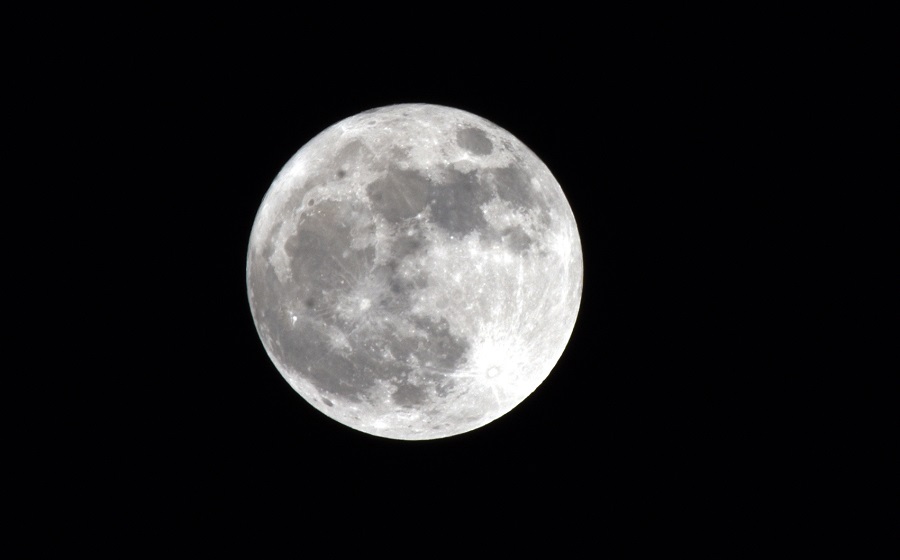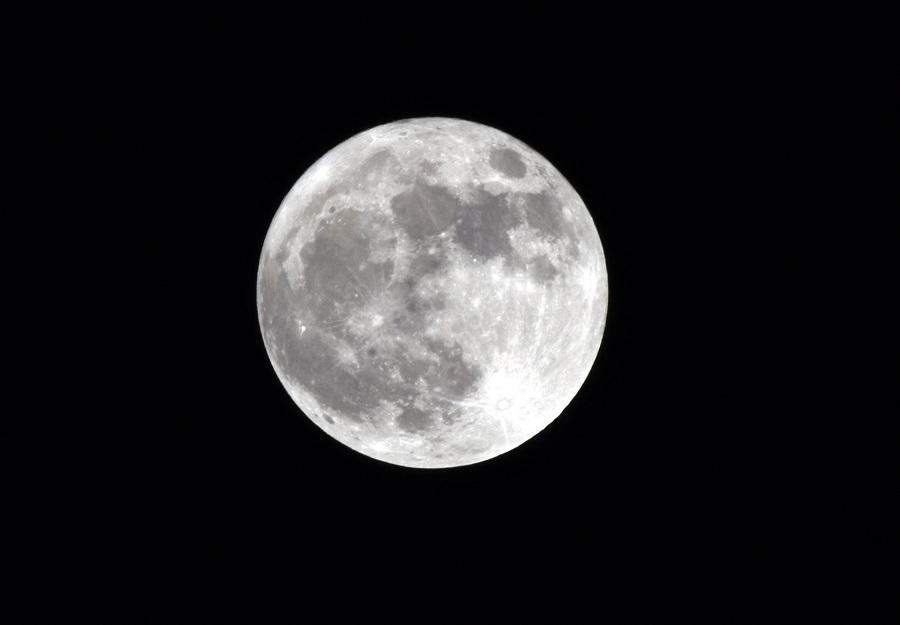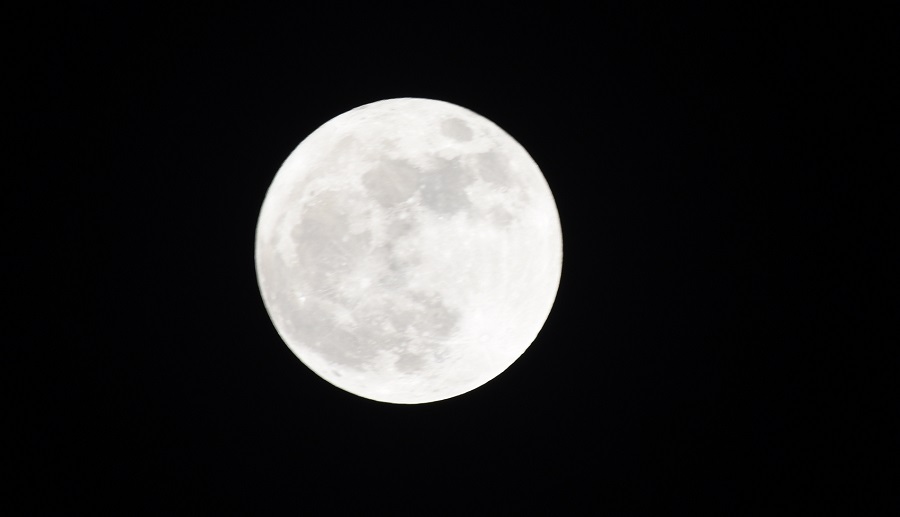A seasonal Blue Moon is the third Full moon of an astronomical season that has four Full Moons. A monthly Blue Moon is the second Full Moon in a calendar month with two Full Moons.
The Full Moon on October 31, 2020 is a monthly Blue Moon. October's first Full Moon, and this year's Harvest moon, was on October 1, 2020.

Full Moon on Dhanbad sky at 9pm on Saturday. Picture by Gautam Dey
The historical origins of the term and its two definitions are shrouded in a bit of mystery and, by many accounts, an interpretation error.
Some believe that the term “blue moon” meaning something rare may have originated from when smoke and ashes after a volcanic eruption turned the Moon blue. Others trace the term's origin to over 400 years ago—folklorist Philip Hiscock has suggested that invoking the Blue Moon once meant that something was absurd and would never happen.

Full Moon on Dhanbad sky at 9.30pm on Saturday. Picture by Gautam Dey
Seasonal Blue Moons take place slightly less frequently than monthly Blue Moons—in the 1100 years between 1550 and 2650, there are 408 seasonal Blue Moons and 456 monthly Blue Moons. This means that either type of Blue Moon occurs roughly every two or three years.
The moon is not going to look blue, Debiprosad Duari, the director (research and academic) of MP Birla Planetarium, had said.

Full Moon on Dhanbad sky at 10pm on Saturday. Picture by Gautam Dey
“In modern parlance, a blue moon is the second full moon in a calendar month. The time between one full moon and the next is close to the length of a calendar month. So, the only time one month can have two full moons is when the first full moon happens in the first few days of the month, in this case on October 1.
"But the original concept of a blue moon is part of folklore and practices of the medieval agrarian society," Duari said.











